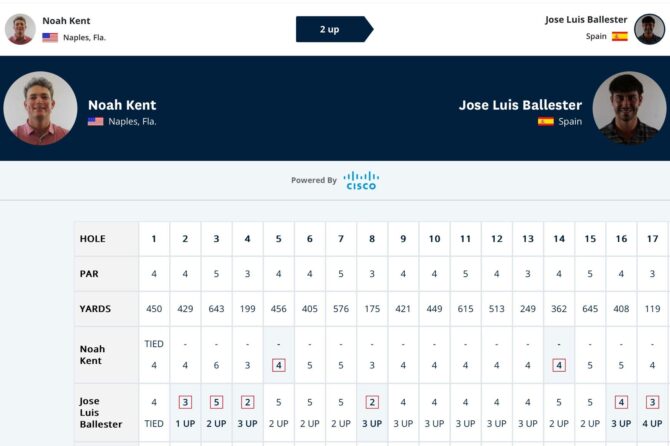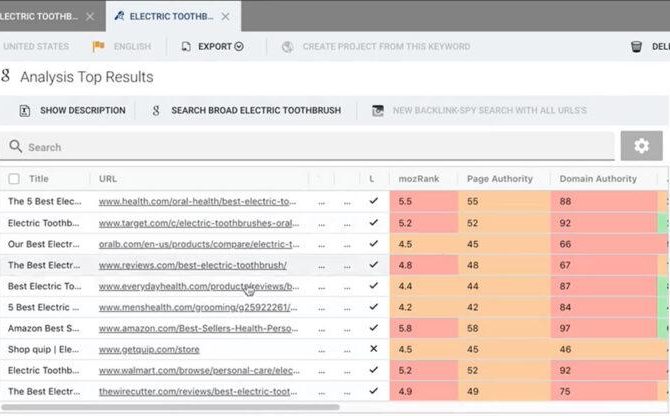Optimizing Golf Driver Performance Through Shaft Flex Selection
The selection of shaft flex plays a vital role in enhancing golfers’ performance with their drivers and overall experience on the course. Shaft flex impacts crucial aspects of golf swing dynamics such as ball speed, launch angle, accuracy, and more. This comprehensive analysis delves into the intricate correlation between shaft flex and driver performance, offering valuable insights into optimizing equipment choices based on individual swing characteristics. Golfers can enhance their drives, improve swing efficiency, and achieve better accuracy and distance by understanding the range of shaft flex options available to them.
Matching Shaft Flex to Swing Dynamics: A Foundational Element of Golf Driver Performance
When choosing a golf driver shaft, a key consideration is the player’s swing speed. Golfers with higher swing speeds typically benefit from stiffer shafts as they provide enhanced control and precision. The rigidity of stiffer shafts offers stability during the swing, reducing clubhead twisting and enabling more predictable and accurate strikes. On the other hand, players with slower swing speeds or beginners may find flexible shafts more suitable. These shafts, with their increased bending capacity, promote distance and forgiveness by amplifying energy transfer to the ball and minimizing mishits.
The trajectory and spin imparted to the ball are also influenced by shaft flex. Stiffer shafts tend to produce lower launch angles and reduced spin, ideal for experienced players aiming for penetrating drives. In contrast, more flexible shafts generate higher launch angles and increased spin, offering forgiveness and accuracy for players seeking straighter shots. Selecting the right shaft flex aligned with desired ball flight characteristics ensures optimal performance and effectiveness with the driver.
Evaluating Swing Dynamics and Flex Selection for Enhanced Precision
Assessing swing dynamics and selecting the appropriate shaft flex are fundamental aspects of golf club fitting. Golfers should consider factors such as swing speed, tempo, and consistency when making their choices:
- Swing Speed: Higher swing speeds benefit from stiffer shafts for control and precision.
- Tempo: Consistent and smooth swings are suited for stiffer shafts, while erratic swings may require more flexible shafts.
- Consistency: Players struggling with consistency can benefit from flexible shafts, providing forgiveness and consistent results.
Utilizing Shaft Flex for Optimal Launch Angle and Distance
Understanding the relationship between shaft flex and launch angle is crucial for maximizing distance. Stiffer shafts promote lower launch angles, ideal for experienced golfers seeking accuracy. On the other hand, flexible shafts produce higher launch angles, enabling players with slower swings to achieve greater carry distance.
Matching shaft flex to individual swing dynamics is essential for optimizing performance and enhancing the overall golfing experience. By carefully selecting the right shaft flex, golfers can achieve consistent, powerful drives on the course and elevate their game to new heights.
Enhancing Golf Driver Performance through Shaft Flex Optimization
Shaft flex stands as a critical factor in driving golf performance to new heights, demanding meticulous attention from golfers looking to elevate their game. Experienced players with high swing speeds often prefer stiffer shafts for enhanced control and precision. Conversely, beginners and players with slower swings tend to lean towards more flexible shafts, which prioritize distance and forgiveness.
Empowering golfers with the knowledge of shaft flex enables them to align their equipment with their unique swing dynamics effectively. By choosing the right shaft flex, golfers can boost their ball speed, optimize launch angles, and overall performance, resulting in more consistent and impactful drives.
Exploring the Intricate Relationship Between Shaft Flex and Driver Performance
Delving into an in-depth analytical study reveals the nuanced connection between shaft flex and driver performance, offering a profound understanding of this vital aspect of golf club design. Golfers are presented with a comprehensive guide to selecting the optimal shaft flex for their style of play, emphasizing the significance of matching equipment to individual swing characteristics for maximum impact on the course.
Guidelines for Shaft Flex Selection Based on Swing Speed
To determine the ideal shaft flex, golfers should evaluate their swing speed carefully. As a rule of thumb, swing speeds exceeding 100 mph generally benefit from stiffer shafts, while more flexible options are advised for speeds below 90 mph. This strategic selection of shaft flex allows golfers to fine-tune their ball trajectory and achieve optimal carry distance with each swing.
The Impact of Shaft Flex on Launch Angle and Distance
A detailed table illustrates the distinct launch angles and carry distances associated with different shaft flex categories. By aligning shaft flex with swing speed, golfers can optimize these crucial parameters, leading to more reliable and effective drives on the course.
Customizing Equipment to Player Capabilities: Flex Recommendations
Accurate matching of shaft flex to individual swing dynamics requires a thorough consideration of factors like swing speed, strength, and skill level. Tailored recommendations cater to experienced golfers with high swing speeds, beginners, and players with slower swings, offering insights into choosing the right flex for enhanced performance and improved control over ball flights.
Incorporating Shaft Flex Optimization into Golf Driver Practice
To integrate shaft flex optimization into practice sessions effectively, golfers are advised to view it as an integral part of improving their overall swing mechanics. By starting with a baseline understanding of swing speed and tempo, golfers can experiment with different shaft flexes to identify the most suitable match for their game. Trackers are recommended for monitoring key performance metrics like ball speed, launch angle, spin rate, and accuracy, enabling data-driven decisions to refine techniques and enhance performance effectively.
Conclusion
This study sheds light on the pivotal role of shaft flex in maximizing golf driver performance. The insightful analysis underscores the importance of understanding and optimizing shaft flex to unleash the full potential of golfers on the course, leading to enhanced precision, consistency, and overall player satisfaction.
Elevating Golf Performance through Refined Techniques: An In-Depth Academic Exploration
In the quest for golfing excellence, the mastery of intricate techniques plays a pivotal role. Seasoned golfers leverage these subtle strategies to transcend technical expertise, elevating their performance to new heights.
This academic discourse delves into the diverse array of strategies deployed by proficient golfers, encompassing advanced green reading, strategic tee shot placements, and adept course management. Additionally, the article sheds light on the significant impact of psychological factors in decision-making processes.
Moreover, the narrative underscores the significance of shot shaping, accentuating the art of controlling ball trajectory and spin to achieve desired outcomes. By integrating these refined techniques into their gameplay, golfers can substantially enhance their precision, minimize stroke counts, and consistently achieve remarkable results.
As a comprehensive resource for golfers aiming to optimize their performance, this article offers actionable insights into the subtle yet impactful techniques that set skilled players apart.
Mastering Golf Performance through Sophisticated Strategies: An Academic Exploration
In the pursuit of golfing excellence, the application of sophisticated techniques plays a pivotal role. Experienced players leverage these nuanced strategies to elevate their performance beyond technical proficiency, reaching new levels of mastery on the course.
This academic exploration delves into the multifaceted strategies employed by adept golfers, covering expert green reading, strategic tee shot placement, and meticulous course management. Additionally, the article sheds light on the indispensable role of psychological elements in decision-making processes.
Furthermore, the discourse emphasizes the art of shot shaping, highlighting the ability to manipulate ball trajectory and spin to achieve specific outcomes. By incorporating these refined techniques, golfers can enhance their accuracy, lower their stroke count, and consistently deliver outstanding results.
As a detailed guide for golfers looking to optimize their performance, this article offers practical insights into the subtle yet impactful techniques that define elite players on the golf course.

Impact of Shaft Flex on Golf Driver Performance: Optimizing Accuracy, Distance, and Swing Dynamics
When it comes to mastering the art of golf, every detail counts. One crucial factor that significantly influences the performance of golf drivers is the shaft flex. Understanding the impact of shaft flex on accuracy, distance, and swing dynamics is essential for golfers looking to elevate their game to the next level.
The Significance of Shaft Flex in Golf Performance
Shaft flex plays a pivotal role in determining how a golf club behaves during a swing. The choice between a stiff or flexible shaft can make a substantial difference in the outcome of a shot. Experienced players with high swing speeds often prefer stiffer shafts for improved control and accuracy. In contrast, beginners and players with slower swings may benefit more from flexible shafts, which can promote distance and forgiveness.
Optimizing Accuracy with Shaft Flex Selection
Selecting the right shaft flex can have a profound impact on accuracy. Stiffer shafts provide stability and control, reducing the likelihood of errant shots caused by clubhead twisting. On the other hand, flexible shafts can enhance forgiveness, minimizing the effects of mishits and promoting straighter ball flights. By matching the shaft flex to their individual swing dynamics, golfers can achieve greater precision on the course.
Maximizing Distance through Shaft Flex Variation
The relationship between shaft flex and distance is equally crucial. Stiffer shafts tend to produce lower launch angles and reduced spin, ideal for players looking to achieve maximum carry distance. In contrast, more flexible shafts can generate higher launch angles and increased spin, allowing players to elevate the ball and achieve greater distances. By understanding how shaft flex affects ball trajectory, golfers can optimize their driving distance effectively.
Enhancing Swing Dynamics with Tailored Shaft Flex
Tailoring shaft flex to suit individual swing dynamics is key to optimizing performance. Factors such as swing speed, tempo, and consistency play a vital role in determining the ideal shaft flex for each player. By analyzing these elements and selecting the appropriate shaft flex, golfers can enhance their swing efficiency, increase ball speed, and achieve a more consistent and effective driving performance.
Practical Tips for Shaft Flex Adjustment
- Regularly assess your swing speed to ensure the shaft flex matches your needs.
- Experiment with different shaft flex options to find the one that suits your playing style best.
- Seek professional advice or club fitting services to get personalized recommendations for optimal shaft flex selection.
Conclusion
the impact of shaft flex on golf driver performance cannot be overstated. By understanding how shaft flex influences accuracy, distance, and swing dynamics, golfers can make informed decisions when selecting their equipment. Whether aiming for greater precision, increased distance, or improved swing efficiency, the right shaft flex can make a significant difference in overall performance on the course. With careful consideration and proper selection, golfers can optimize their driving abilities and achieve their desired results with confidence.




